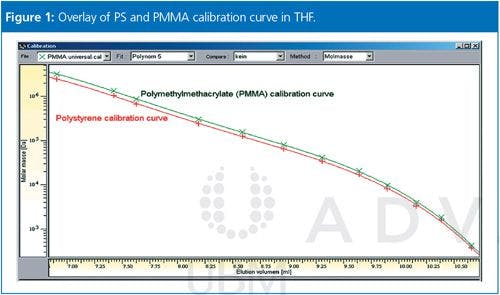The Power of Planar Chromatography
High performance thin-layer chromatography (HPTLC) offers many advantages over conventional separation techniques when applied to complex samples. The Column interviewed Gertrud Morlock from Justus Liebig University Giessen in Germany, on her current research, which involves hyphenating HPTLC with multiple analytical techniques.
High performance thin-layer chromatography (HPTLC) offers many advantages over conventional separation techniques when applied to complex samples. The Column interviewed Gertrud Morlock from Justus Liebig University Giessen in Germany, on her current research, which involves hyphenating HPTLC with multiple analytical techniques.
Photo Credit: blackred/Getty Images

Q. Your research focuses on the development of planar chromatography. For those who are not familiar with the field, can you describe the principles behind it?
A: Planar chromatography comprises all chromatographic techniques that have an open planar stationary phase present as - or on - a plane. Thin-layer chromatography (TLC) is the most commonly used and simple planar chromatographic technique, whereas high performance TLC (HPTLC) is the most efficient and powerful one and refers to an optimized coating material combined with advanced instrumentation to utilize its full potential.
Hyphenations of HPTLC, particularly with mass spectrometry (HPTLC-MS), were mainly developed in the last decade. A key feature of elution head-based HPTLC-MS is the cost-effective, sensitive, and targeted recording of mass spectra, whereas for fast scan along a separated sample track desorption-based HPTLC-MS is useful, and also more discriminative for the transfer of compounds. Optimized solutions are also commercially available. Hyphenations of HPTLC with attenuated total reflection Fourier transform infrared (ATR-FTIR) spectroscopy and nuclear magnetic resonance (NMR) spectroscopy are also possible with an elution head-based interface. Recent progress was also made in the hyphenation with bioassays.
HPTLC is a technique that can be used for many kinds of hyphenation because of its open system and stepwise operation as well as its image-giving feature. Thus, HPTLC-UV-vis-fluorescence detection (FLD)-bioassay-heartcut high performance liquid chromatography (HPLC)-HRMS could become an interesting robust workflow for analysts searching for effective compounds in complex samples.
Q. In a study published in 2014, you developed a method using quantitative direct bioautography coupled with MS to discover endocrine disrupting compounds (EDCs).1 Can you explain what bioautography refers to?
A: Bioautography has been known since 1946 and it is the combination of planar chromatography with bioassays. There are different subcategories, but direct bioautography is the most effective. The chromatogram is immersed into the cell suspension and this seeded plate is incubated for a few hours, depending on the bioassay selected. After a visualization step, only the effective compound zones are visible in a complex sample that might consist of, for example, up to 4000 compounds. Direct bioautography may answer analytical questions rapidly, which may not be solved with other techniques that fast.
Q. Can you explain how you developed this novel approach using HPTLC?
A: The diffusion of zones during the incubation period has been a fundamental challenge since 1946 and past approaches to solve it have failed. Water has a high elution power on normal-phases like silica gel, resulting in diffusion of polar to middle polar compounds, and so we chose to study the application of water-wettable reversed phases. Water-wettable reversed layers have been available since 1970, and so it was unsurprising that we initially obtained no response - other researchers who might have tried this must have got the same result! But because the approach made sense theoretically, we did not give up. We studied several parameters of influence, as well as the pH value of the plate. This pH measurement revealed the crucial shortcoming: the plate’s pH needed adjustment. Buffering of the layer before the bioassay application was studied next and led to a successful response and sharply bounded bioactive zones! After optimization of further bioassay parameters, a streamlined workflow was obtained that detected important estrogens down to the fg/band level and allowed those estrogens without enrichment to be detected down to the ng/L range.3
Q. In a recent study, you developed a HPTLC-MS method for the detection of endocrine disrupting compounds (EDCs) in food.2 Why did you focus on the detection of EDCs in food samples?
A: Endocrine-disrupting compounds (EDCs) may affect the metabolism at very low concentrations. In this bioassay example, xeno-oestrogens are detectable, as well as phyto-oestrogens, oestrogen-effective contaminants, degradation products, or by-products of food processing. We were looking for all compounds in a complex sample that can generate this endocrine effect. A holistic food profiling for bioactivity is urgent on the food intake side, as exemplarily shown in this paper. The demonstrated potential of HPTLC in combination with cell assays in general can contribute to the discovery of not only ECDs present but also, for example, of new antibiotics against antibiotic-resistant bacteria and especially to the understanding of potential developments of a resistance against antibiotics or of anabolic effects caused by food intake. Commonly used target analyses cannot provide comprehensive answers, and such limited results that focus only on known bioactive compounds may mislead decision makers. Hence, optimized bioautographic workflows are important tools in the analytical toolbox of experts.
Q. Can you describe the principles of the method and how it was developed?
A: You only see and get what you extract and what you detect - not every compound is ionizable using the standard settings of MS, and so on… analysts have to be very cautious in the interpretation of results. The principle behind this method is that the sample is used as naturally as possible; it is only extracted with different solvents and then filtered. As the layer is used only once, sample preparation on the plate and chromatography can be performed simultaneously. Matrix can remain at the start zone or be shifted to the front. However, it is still accessible for the non-target bioassay detection and not out-of-focus. At this point bioactive compounds are discovered - the next question is “Which compounds are these?”
At the moment we are working on coupling the method to MS directly from the bioactive zone. Using an orthogonal separation principle, coeluting compounds can be separated. The elution of a zone via an integrated HPLC column and valve into the MS increases the overall separation number at almost no or few extra-time for the second dimension. This way most of the very polar salt load of the cell culture medium can be directed to the waste. This streamlined hyphenated workflow, HPTLC-UV-vis-FLD-bioassay-HPLC-HRMS, is fascinating because of its stepwise, image-giving feature. Despite its super-hyphenation, it offers the potential to work robustly in routine analysis if the analyst has suitable expertise. More education and training in HPTLC is necessary to achieve this.
Q. What are the advantages of using HPTLC-MS over existing methods, for example, HPLC-MS?
A: For non-target analysis by HPTLC-UV-vis-FLD-MS, matrix or background is not directed into the MS because visual evaluation is performed prior to MS recording as a result of the stepwise operation. I consider this and the parallel screening of many samples as a real benefit. This multi-detection preselection via the UV-vis-FLD images for MS recordings of natural complex samples may reduce the cleaning circles and improve robustness of the MS system. Knowing that the focus on UV-vis-FLD-detectable zones only may mislead a decision, a universal derivatization reaction follows on the same plate after the MS recordings. Any further compound can thus be detected and attract attention. Of course, there is a point where HPTLC analysts have to stop, despite all technical flexibility.
Q. What are you working on next?
A: “Next” is a scientific secret… At the moment: On instrumental developments such as office chromatography, hyphenations with NMR, HPLC-HPTLC, further bioassays, and MS such as direct analysis in real time MS (DART-MS), matrix-assisted laser desorption/ionization-time-of-flight MS (MALDI-TOF-MS), etc. On the application side, we are working on different projects such as profiling and pattern recognition of a hundred packaging ink formulations, bio profiling of coffee powders prepared differently, wine samples and traditional German medicines, steviol glycosides in leaves cultivated differently, various projects with fermentation broths, and amino acids in dates. There are so many because we have so many dedicated young students who want to learn this at JLU Giessen. Cost-effective bioprofilings are definitely part of the analytical future. We are working on these - and more separation scientists should too.
References
- I. Klingelhöfer and G.E. Morlock, Journal of Chromatography A1360, 288-295 (2014).
- G.E. Morlock and I. Klingelhöfer, Analytical Chemistry86, 8289-8295 (2014).
- I. Klingelhöfer and G.E. Morlock, Bioprofiling of Surface/Waste Water and Quantitation of Discovered Endocrine Active Compounds Such As Natural Oestrogens and Xenoestrogens with a Streamlined Direct Bioautography, In Submission.

Prof. Dr. Gertrud Morlock is Chair of Food Science at the Justus Liebig University Giessen in Germany. Her research focuses on planar chromatography, office chromatography, hyphenations in HPTLC, effect-directed analysis, pattern recognition, bioprofiling, food analysis, analysis of natural bioactive products, analysis of commodities, pharmaceutical formulations, environmental samples, and trace analysis.

Silvia Radenkovic on Building Connections in the Scientific Community
April 11th 2025In the second part of our conversation with Silvia Radenkovic, she shares insights into her involvement in scientific organizations and offers advice for young scientists looking to engage more in scientific organizations.
Regulatory Deadlines and Supply Chain Challenges Take Center Stage in Nitrosamine Discussion
April 10th 2025During an LCGC International peer exchange, Aloka Srinivasan, Mayank Bhanti, and Amber Burch discussed the regulatory deadlines and supply chain challenges that come with nitrosamine analysis.
Silvia Radenkovic on Her Research and Passion for Scientific Collaboration
April 3rd 2025Silvia Radenkovic is a laboratory clinical biochemical genetics fellow at UMC Utrecht, the Netherlands and a member of Females in Mass Spectrometry (FeMS). She is currently doing a clinical fellowship where she is involved in diagnosing and helping treat patients with inborn metabolic diseases (IMD). Her research focuses on IMD such as congenital disorders of glycosylation (CDG), omics techniques such as tracer metabolomics, and different disease models.











